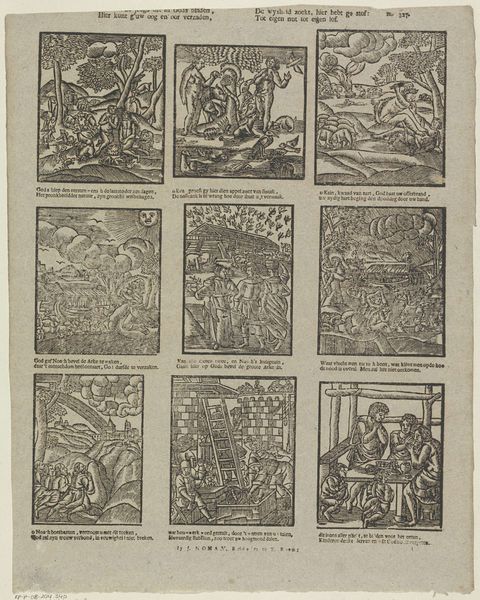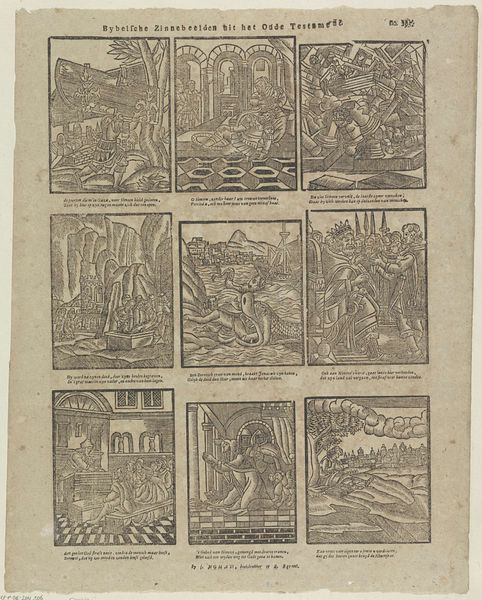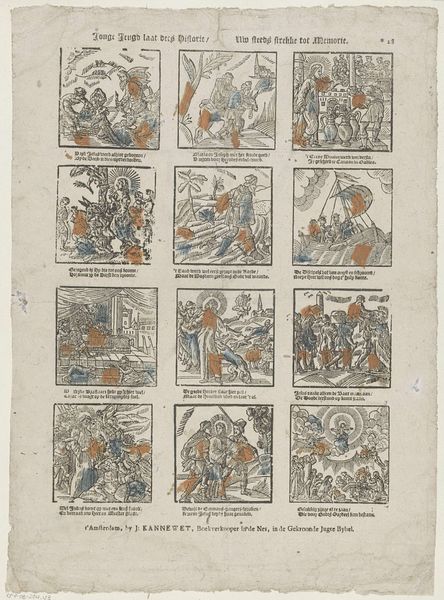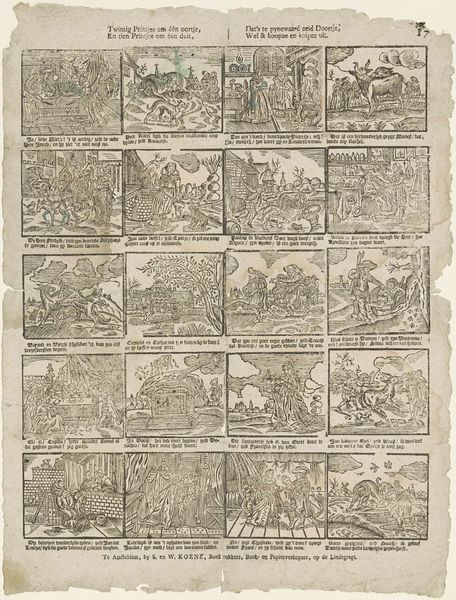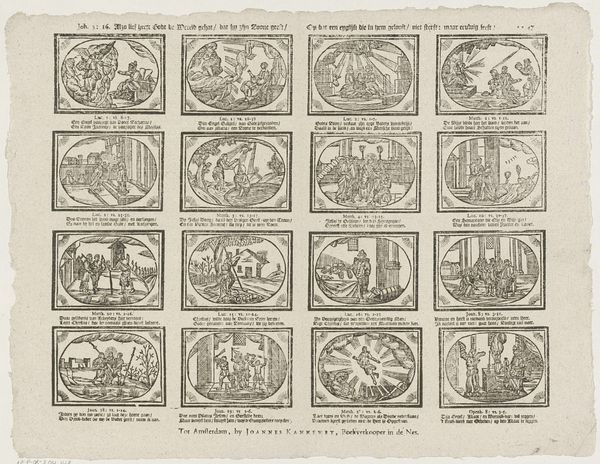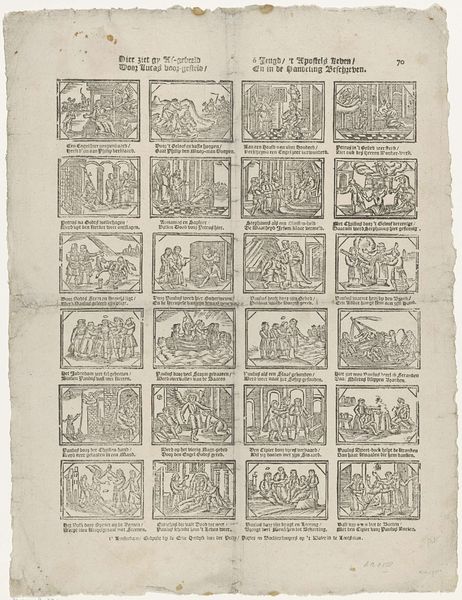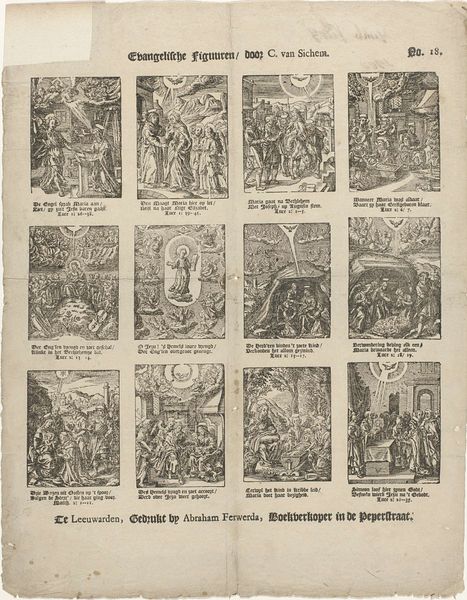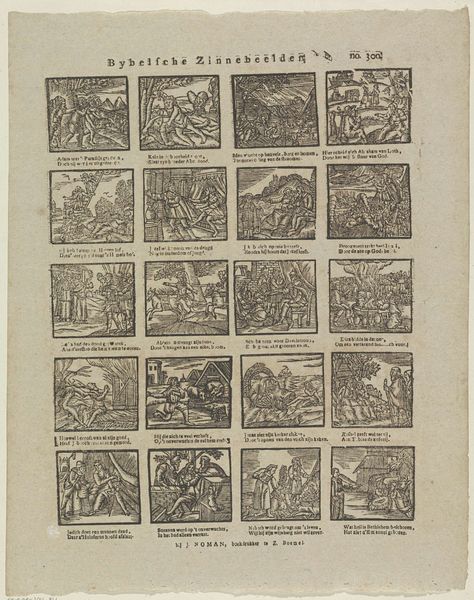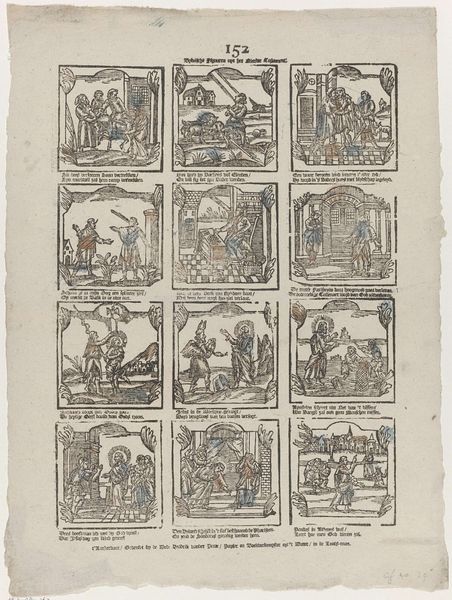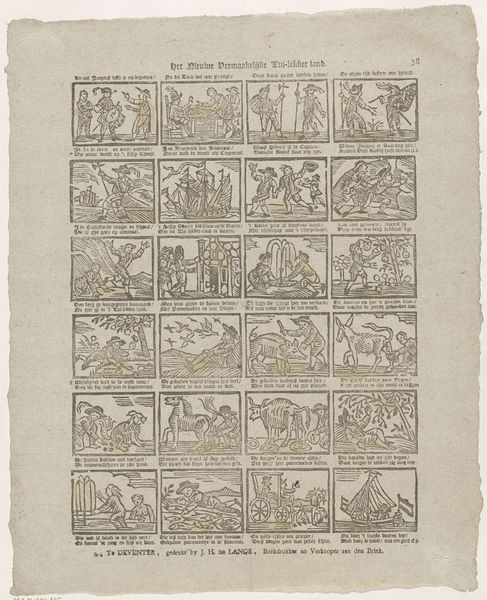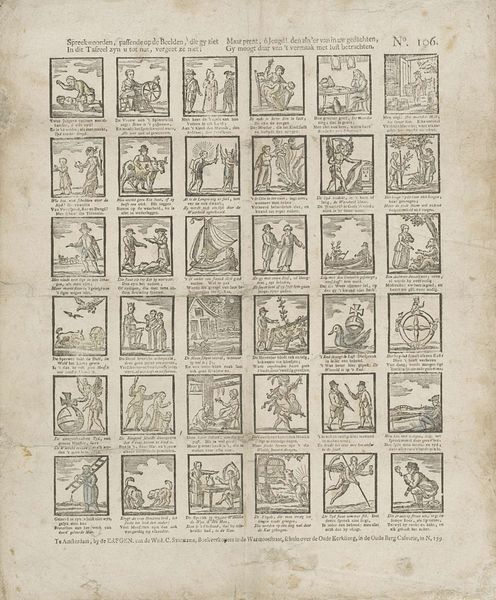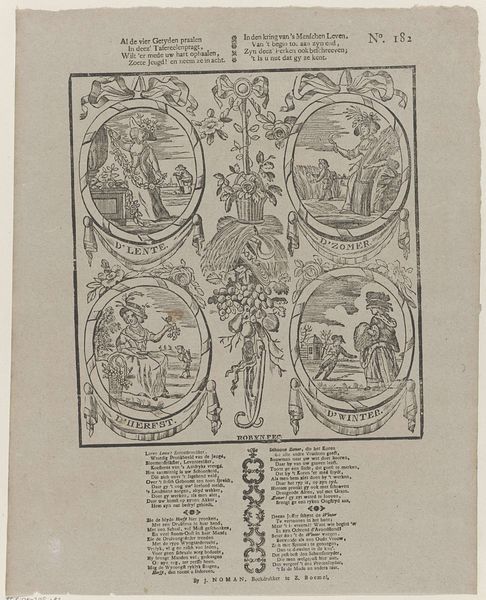
print, engraving
#
medieval
#
narrative-art
# print
#
engraving
Dimensions: height 390 mm, width 316 mm
Copyright: Rijks Museum: Open Domain
Curator: Before us is "Bybelsche figuuren, des Ouden Testaments," a print dating from 1715 to 1813, now residing at the Rijksmuseum. The work appears to be an engraving, part of a larger series portraying scenes from the Old Testament. Editor: My first impression is that there is an emphasis on capturing movement and conveying detailed biblical narratives. But something about its style feels very medieval—even archaic—despite the later date. Curator: Interesting point. Focusing on materiality, the choice of print as a medium indicates a democratization of religious imagery. How does the availability of this affect our reading? Editor: It challenges notions of who can access and interpret scripture, opening it to wider audiences beyond the clergy and the elite. This could be interpreted as an act of challenging social hierarchies by those producing the work, regardless of its time of making. It invites questions about literacy, power, and the interpretation of religious narratives. Curator: Exactly. This particular printing probably involved a workshop setting with specialized labor, each stage contributing to the final product. We can ask how these labor conditions affected the work, from the quality of engraving to its distribution networks. Editor: I think it is vital to remember these images reflect and perpetuate particular worldviews of the artists, engravers, publishers and consumers. Are they questioning biblical tales or just visualizing what’s already accepted in the common rhetoric of the time? And why are these scenes ordered as they are? Curator: Perhaps. It comes down to tracing the entire lifecycle of the object, from creation to consumption. The paper, the ink, the tools—each tell a story about production. Editor: This makes it a case study of not just religious art, but of art’s place in shaping social norms, and its function to preserve collective memory in communities of faith. It encourages dialogue and debate. Curator: Indeed, its accessibility and production sheds light on broader socio-economic currents. Looking closer makes us realize how much more to this piece there really is to explore. Editor: And recognizing that religious art from the past carries messages which can reflect different realities about us today, either supporting or critiquing our views of historical truth.
Comments
No comments
Be the first to comment and join the conversation on the ultimate creative platform.
